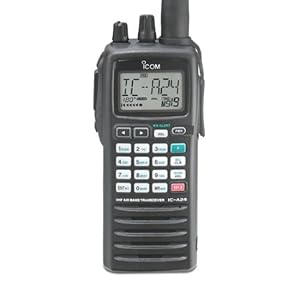Interesting Facts About Cell Phones
Cell phone (telefone celular) is a wireless, portable, long-range, electronic telephone, which during travel can seamlessly change from one antenna connections, radio reception cell to another cell radio reception, without dropping or losing the ongoing call.
Interesting Facts About Cell Phones
Interesting Facts About Cell Phones
Interesting Facts About Cell Phones
Interesting Facts About Cell Phones
Besides the standard voice function of a telephone, latest cell phones (telefone celular) have features such as SMS for text messages, MMS for multimedia messages, radio, games, internet connectivity for email, browsing, blogging, music (MP3) playback, memo recording, built-in cameras and Camcorders, ringtones, personal organizers, Push-to-Talk (PTT), infrared and Bluetooth connectivity, call registers, streaming video, downloading videos, video call, and also serves as wireless modems for PCs thatcan be connected to the Internet.
The power in a cell phone (telefone celular) is obtained from rechargeable batteries, which can be recharged from the mains, a USB port or a cigarette lighter port in an automobile. Nickel Metal Hydride were the most common types of batteries, which due to the "memory effect" (the user can recharge only when the enTire battery is drained off) were replaced by Lithium-Ion batteries, which did not suffer from any memory effect.
Cell phones (telefone celular) came into existence because of the invention of hexagonal cells in 1947, for the base stations by Bell Labs engineers at at & t. This was further developed during the 1960s by Bell Labs. During a call, the channel frequency could not be changed automatically from one cell (base stationcoverage area) to another cell (base station coverage area) as the person traveled from the area of one cell to the area of another cell. Amos Joel of Bell Labs invented a breakthrough invention and called it as the call handoff ' by which the channel frequency could be changed automatically from one cell to another cell, during the same call, as the mobile user traveled from one cell to another cell. Due to their heavy construction, these phones were used mainly in automobiles.
The first practical cell phone in a non-vehicle setting, and which could be handheld, was invented by Martin Cooper, the General Manager (Communications Division) of Motorola, who made the world's first handheld cell phone (telefone celular) call on April 3, 1973.
The technology bywhich the cell phone (telefone celular) works depends on the mobile phone operator; however, all of them use electromagnetic radio waves, which are in touch with a cell site (base station). The base station is composed of several antennas which are mounted on a pole, tower, or building. Cell sites are spread at a distance of 5 to 8 miles (approx. 8 to 13 miles) from each other. The low power transceiver from the cell phone transmits the voice and data to the nearest cell site. During moveMent, the cell phone will "handoff" the information to other cell site. Mobile phone operators use many technologies to maintain the smooth stream of digitized data from the cell phone to the cell site and vice versa.
The wireless telephone technologies are grouped under heads known asgenerations, starting from zero generation or 0 g. The current generation going on is 4 g; however, there are old cell phones (telefone celular) that still operate on 1 g, 2 g, and 3 g technologies. The wireless telephone technologies used in each generation are as given below:
0 g: PTT, MTS, IMTS, AMTS, OLT, MTD, Autotel/PALM, ARP
1 g: NMT, AMPS/TACS/ETACS, CDPD, Mobitex, Hicap, DataTac
2 g: GSM, iDEN, D-AMPS, IS-95/cdmaOne, PDC, PHS, CSD, HSCSD, GPRS, CDMA2000 1xRTT, WiDEN/IS-2000, EDGE (EGPRS)
3 g: W-CDMA, UMTS (3GSM), FOMA, TD-CDMA/UMTS-TDD, 1xEV-DO/IS-856, TD-SCDMA, GAN (UMA), HSDPA, HSUPA, HSPA, HSPA +, E-UTRA
4 g: UMB, UMTS Revision 8 (LTE), WiMAX
Frequency bands: SMR, Cellular, PCS
The impact of cell phone (telefone celular) usage on human health has been ofconsiderable worldwide concern. Research studies in Copenhagen, from the Danish Institute of Cancer Epidemiology, the National Cancer Institute, and the Institute of Cancer Research, do not establish any link between cancer and cell phone usage. However, an intergovernMental agency IARC (International Agency for Research on Cancer) forming part of the World Health Organization of the United Nations, undertook a study of 4.500 users and found a statistically significant link between cell phone usage and tumor frequency. Further research is going on.
Cell phone (telefone celular) usage and driving is a common worldwide phenoMenon. Some jurisdictions have banned usage of hand-held phones during driving, but allowed the hands-free fashion of cell phone usage while driving. However,studies have found out that the distraction is caused by the conversation itself; hence, both hand-held and hands-free cell phones contribute towards road traffic accidents. Further studies on cell phone usage and driving are going on.
Nokia Corporation is currently the world's largest manufacturer of cell phones (telefone celular). Other notable cell phone manufacturers, in alphabetical order, are 3 g, Audiovox (now UT Starcom), Benefon, BenQ-Siemens, Fujitsu, High Tech Computer Corporation (HTC), Kyocera, LG, Motorola, NEC, Panasonic (Matsushita Electric), Pantech, Philips, Research In Motion, Sagem, Samsung, Sanyo, Sharp, Siemens, Sierra Wireless, SK Teletech, Sony Ericsson, T & A Alcatel, Toshiba, and Verizon.
Interesting Facts About Cell Phones